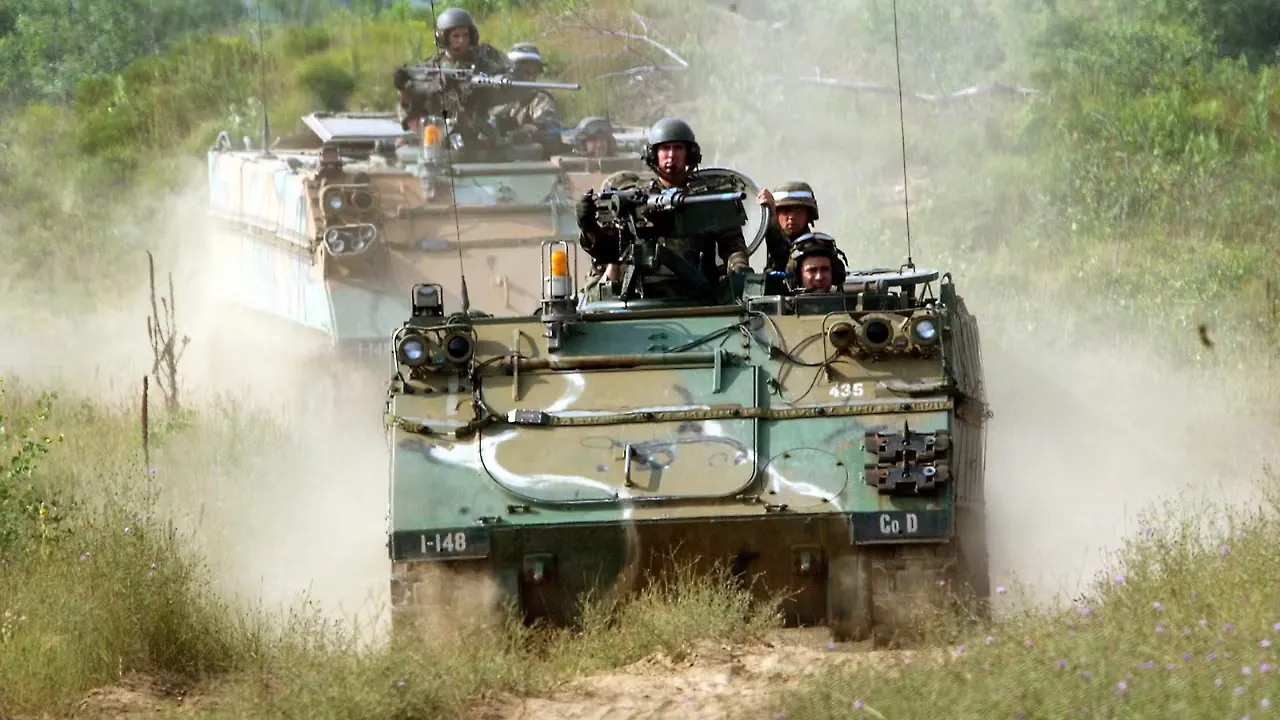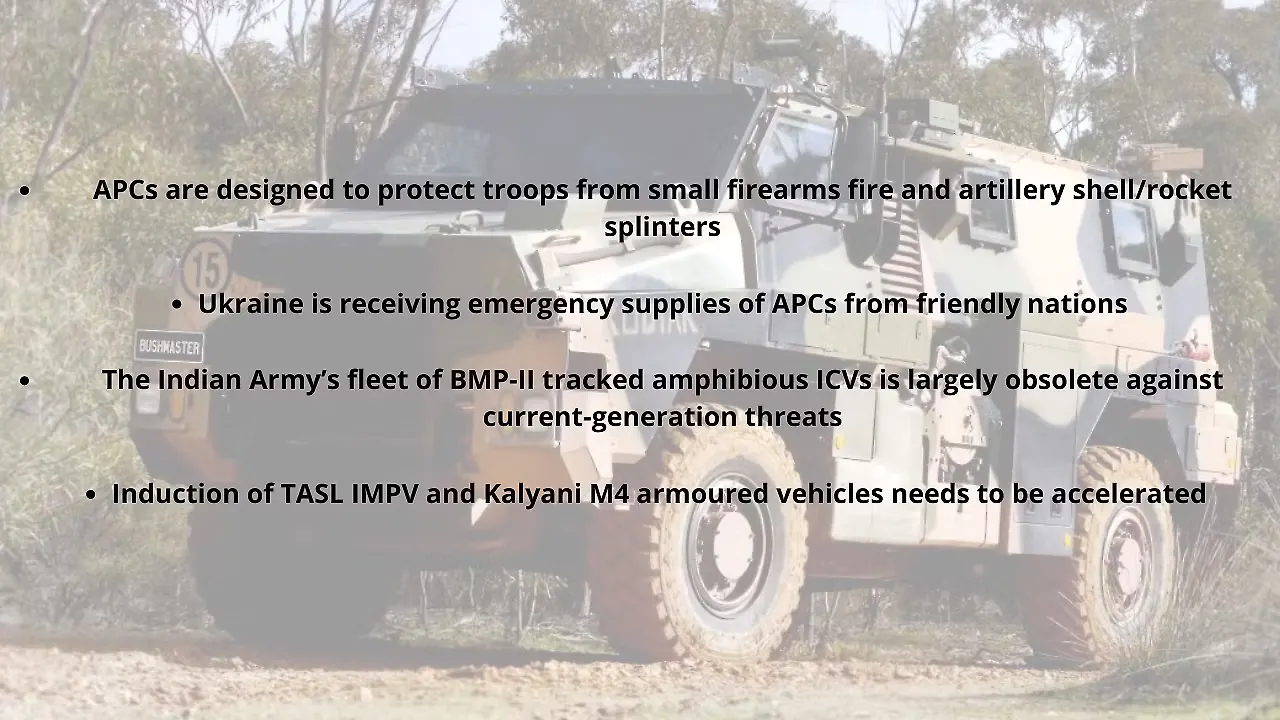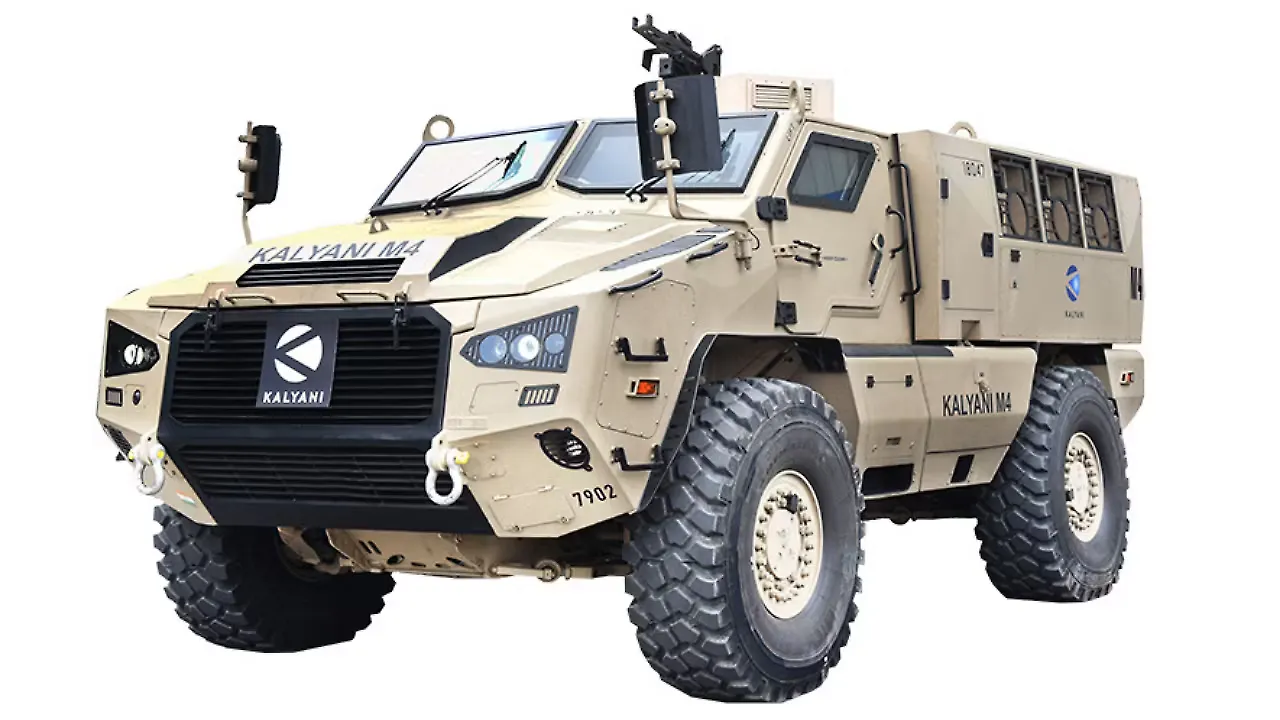
Any conflict brings with it new learnings for the armed forces involved in that conflict and the ongoing battle involving Ukraine, which is fighting to retain its sovereignty in the face of a Russian invasion, is throwing up important new lessons. For many, the seeming ineffectiveness of Russian combat power in sustained military operations has come as a surprise to many defence observers.
While Russia has been surprised by the scale and determination of the Ukrainian resistance, fighting for their homeland, the latter has no doubt been helped by prior training with NATO forces and supply of essential fighting equipment in large quantities.
The increased use of artillery weapons and precision rocket systems along with strikes against targets of opportunity using drones, is now causing widespread casualties among infantry soldiers caught out in the open. Such losses are again bringing into focus the importance of armoured personnel carriers (APC) and infantry fighting vehicles (IFV) on the battlefield.
APCs are vital for transport of troops on battlefield and are designed to protect them from small firearms fire and artillery shell/ rocket splinters. Ukraine is now being resupplied with a variety of APCs by friendly countries.
Armoured Supply
In April, US President Joe Biden authorised the supply of 200 M113 APCs to the Ukrainian military. The US military maintains stocks of these APCs and their spares in Europe and hence, keeping the fleet of vehicles operational in Ukraine will be less of a logistics challenge. The US government had earlier provided refurbished M113 APCs to the Government of Iraq in 2011.

M-113 APCs are used to move soldiers and equipment across the battlefield while providing protection from small arms fire and the effects of artillery. The M113 has a crew of two, accommodates 11 fully armed troops and is also fitted with machine guns for self-defence. The Vietnam Era M113 was first fielded by the US Army in 1962 and has seen service in virtually every American military action since then. The improved M113A2 arrived in 1979 and this was followed by the upgraded M113A3 in 1987. In all more than 80,000 M113s have been produced across different variants and sold to 44 different countries.
In May, the Australian Government announced that it would supply 20 Bushmaster Protected Mobility Vehicles, including two ambulance variants to Ukraine. The Bushmaster is well suited to provide protection to Ukrainian armed forces soldiers against mines and improvised explosive devices (IED), shrapnel from artillery and small arms fire. These vehicles will be painted olive green to suit the operating environment in Ukraine and be fitted with radios, a global positioning system (GPS) and additional bolt-on armour for increased protection.
The Bushmaster is an 11-tonne, 4x4 protected vehicle with a four-tonne payload. It was designed to protect up to 10 occupants, combining high levels of blast and ballistic protection with excellent off-road mobility. Built in Australia, the Bushmaster provides protected mobility transport, safely moving soldiers to a battle area prior to dismounting for close combat. It is in service with six countries on four continents.

In mid-December last year, the Netherlands announced that it would undertake a major upgrade of its Bushmaster fleet. All 102 Dutch Army Bushmasters will receive a mid-life update (MLU) to extend their service life into the mid-2030s. Introduced into service in 2006, the Netherlands has deployed the Bushmaster extensively to Afghanistan and Mali.
The UK is also readying to send Mastiff APCs to Ukraine. A heavily armoured, 6x6 patrol vehicle, the Mastiff carries eight troops, plus two crew. Now in its third variant, it is suitable for road patrols and convoys and is the newest in a range of protected patrol vehicles being used for operations in the UK Army. It can attain a maximum speed of 90 kmph and is armed with a 7.62 mm general purpose machine gun and a 12.7 mm heavy machine gun or 40 mm automatic grenade launcher. The Mastiffs are based on the US Cougar 6x6, which is manufactured by General Dynamics Land Systems – Force Protection.
Worrying Scenario For India
The poor performance of Russian military equipment in the conflict with Ukraine is worrying for the Indian military, especially the army, which operates large quantities of Russian defence equipment. Looking at the fate of legacy APCs on the Ukrainian battlefield, the Indian Army will now need to look for an urgent replacement for its large fleet of armoured fighting vehicles (AFV) and infantry combat vehicles (ICV).
The army’s large fleet of approximately 1,600 80s-era BMP-II tracked amphibious ICVs known as ‘Sarath’ are unlikely to perform well on a battlefield filled with armed drones and precision-guided artillery and rockets. The first BMP-II produced under license at Ordnance Factory, Medak rolled out in 1987 and orders continue to be placed for the obsolete vehicles which feature poor levels of armour protection against contemporary threats.
In June 2020, 156 BMP II/IIK ICVs worth INR 1,094 crore were ordered with deliveries expected to be completed by 2023 for use in the army’s mechanised forces. BMP-IIs, which have been indigenously upgraded as Infantry Combat Command Vehicles, receive the designation BMP-IIK. In total, 811 BMP-II and BMP-IIKs are also being upgraded with Modernised Fire Control System and Automatic Target Tracker along with a 3rd Generation Thermal Imager based Gunner Sight and Thermal Imager based Panoramic Commander Sight.

New production BMP-2/2K ICVs are powered by a 285 hp engine and are lighter in weight allowing them to attain speeds of 65 kmph in cross country terrain. The amphibious vehicles can attain a speed of seven kmph in water. The army also inducted new Armoured Engineer Reconnaissance Vehicles (AERV) based on the BMP-II in December 2021, in a boost to its existing engineer reconnaissance capabilities. The new AERVs are being manufactured by Bharat Electronics (BEL) at its Pune facility.
Change In Sight
The delivery in April of the first batch of 8X8 Infantry Protected Mobility Vehicles (IPMV) by Tata Advanced Systems (TASL) was a major boost to the army and marks the long overdue recapitalisation of its armoured vehicle fleet. Development of the IPMV has taken a decade and it is the first strategic platform to be co-developed by DRDO and a private player acquired by the army. The wheeled IPMV was conceived as a replacement for the army’s tracked BMP-II fleet and as an ICV that could operate in hilly terrain.
TASL has equipped the IPMV with an in-house Remote Controlled Weapon Station (RCWS) and indigenously developed external add-on armour protection panels. Another variant is fitted with a new weapons turret with a 30 mm remotely operated cannon. Anti-tank guided missiles (ATGMs) can also be integrated as per the requirement.
The IPMV is expected to be further developed by TASL into a wheeled APC, armed ICV with a 30 mm cannon, command post vehicle, ambulance, special purpose platform, 120 mm mortar carrier, Chemical, Biological, Radiological and Nuclear (CBRN) vehicle, etc. The IPMV is powered by a Tata Cummins water cooled turbocharged diesel engine generating 600 hp at 2,000 rpm and as a result does not suffer from a significant performance deficit at high altitudes. It can carry up to 10 personnel and two crew members and attain a top speed of 100 kmph on land and 10 kmph in amphibious mode.
Bharat Forge has commenced deliveries of Kalyani M4 vehicles as part of a February 2021 order from the Ministry of Defence (MoD) worth INR 178 crore. The Kalyani M4 is based on the 16 tonne Mbombe 4 from South Africa based Paramount Group and has a payload capacity of 2.3 tonne. The Mbombe 4 was first launched onto the global market in 2019 to meet the need for a multi-role platform that could meet the quick mobility needs of armed forces in rough terrain and in areas affected by mine and IED threats. The Kalyani M4 offers ballistic and blast protection of up to 50 kg TNT in a side blast or IED/ roadside bombs. The Kalyani M4 can attain a burst speed of 140 kmph thanks to its powerful engine and independent suspension system. It has an operating range 800 km.
It is also available with a lightweight shielding system that uses add-on armour to provide maximum security against multi-hit ballistic threats, artillery shell fragments, and close proximity IED explosions. The lightweight system is not only designed to be quickly replaceable in the field but also offers full protection for the engine and engine bay, without decreasing the effectiveness of the engine cooling system. The vehicle is fitted with a rear-door ramp design which ensures the rapid deployment of personnel from the vehicle.